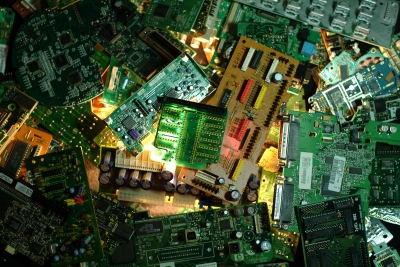In the study, that was partly founded by the EU Comission, the researchers modelled the stocks and flows of gold in the world’s mobile phones to assess how to reduce losses of gold from the loop and help contribute to a circular economy. Gold compromises around 80 per cent of the economic worth of valuable metals in mobile phones and its recovery is the main economic driver for recycling phones.
For both industralised and developing countries, the researchers used the model to develop a base case to identify where gold was „leaking“ from the system. They identified the potential drivers of this leakage using two indicators: loop leakage, which defines how much gold is leaving the system, indicating how closed the loop is; and loop efficiency, which determines how efficiently gold is used by the system.
They identified the four most influential drivers of an efficient closed-loop system as:
- enhancing the collection system of used phones;
- increasing the lifespan of mobile phone use;
- improving informal gold recovery in developing countries; and
- reducing phone hibernation (storage of phones without any use).
Other factors, such as the manufacturing cost, export cost, the functional use of refurbished phones compared with new phones and the price of metals, had surprisingly little influence on closing the loop or loop efficiency.
Based on these results, the researchers identified ways to close the loop and decrease the pressures on gold resources. They modelled how the loop leakage could be minimised and the loop efficiency of the system maximised over the period 1994 to 2050. They found that the current case is unsustainable, with around a 50 per cent leakage of gold (rising to 80 per cent by 2050) and a resource efficiency of only around 35 per cent (dropping to 16 per cent by 2050).
To reduce resource demand and increase resource recoveries, the researchers suggest improving the collection of used phones. This may be achieved by requiring phone producers to include the life-cycle environmental costs and associated end-of-life management costs in their market costs by using, for example Extended Producer Responsibility (EPR) schemes. EPR requirements may also encourage phone producers to design phones that have a longer lifespan and which are easy to recycle.










